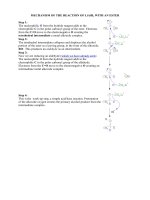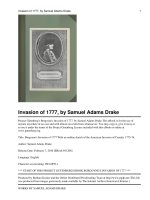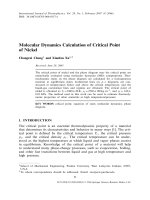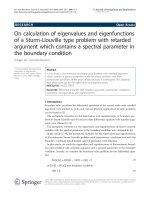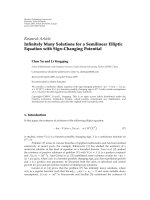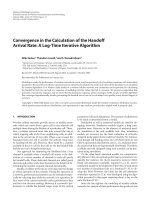- Trang chủ >>
- Cao đẳng - Đại học >>
- Luật
Calculation of the ettingshausen coefficient in a rectangular quantum wire with an infinite potential in the presence of an electromagnetic wave (the electron optical phonon interaction )
Bạn đang xem bản rút gọn của tài liệu. Xem và tải ngay bản đầy đủ của tài liệu tại đây (304.22 KB, 7 trang )
������������������������������������������������������������������������������������������������������������������������������������������������������������������������������������������������������������������������������������������������������������������������������������������������������������������������������������������������������������������������������������������������������������������������������������������������������������������������������������������������������������������������������������������������������������������������������������������������������������������������������������������������������������������������������������������������������������������������������������������������������������������������������������������������������������������������������������������������������������������������������������������������������������������������������������������������������������������������������������������������������������������������������������������������������������������������������������������������������������������������������������������������������������������������������������������������������������������������������������������������������������������������������������������������������������������������������������������������������������������������������������������������������������������������������������������������������������������������������������������������������������������������������������������������������������������������������������������������������������������������������������������������������������������������������������������������������������������������������������������������������������������������������������������������������������������������������������������������������������������������������������������������������������������������������������������������������������������������������������������������������������������������������������������������������������������������������������������������������������������������������������������������������������������������������������������������������������������������������������������������������������������������������������������������������������������������������������������������������������������������������������������������������������������������������������������������������������������������������������������������������������������������������������������������������������������������������������������������������������������������������������������������������������������������������������������������������������������������������������������������������������������������������������������������������������������������������������������������������������������������������������������������������������������������������������������������������������������������������������������������������������������������������������������������������������������������������������������������������������������������������������������������������������������������������������������������������������������������������������������������������������������������������������������������������������������������������������������������������������������������������������������������������������������������������������������������������������������������������������������������������������������������������������������������������������������������������������������������������������������������������������������������������������������������������������������������������������������������������������������������������������������������������������������������������������������������������������������������������������������������������������������������������������������������������������������������������������������������������������������������������������������������������������������������������������������������������������������������������������������������������������������������������������������������������������������������������������������������������������������������������������������������������������������������������������������������������������������������������������������������������������������������������������������������������������������������������������������������������������������������������������������������������������������������������������������������������������������������������������������������������������������������������������������������������������������������������������������������������������������������������������������������������������������������������������������������������������������������������������������������������������������������������������������������������������������������������������������������������������������������������������������������������������������������������������������������������������������������������������������������������������������������������������������������������������������������������������������������������������������������������������������������������������������������������������������������������������������������������������������������������������������������������������������������������������������������������������������������������������������������������������������������������������������������������������������������������������������������������������������������������������������������������������������������������������������������������������������������������������������������������������������������������������������������������������������������������������������������������������������������������������������������������������������������������������������������������������������������������������������������������������������������������������������������������������������������������������������������������������������������������������������������������������������������������������������������������������������������������������������������������������������������������������������������������������������������������������������������������������������������������������������������������������������������������������������������������������������������������������������������������������������������������������������������������������������������������������������������������������������������������������������������������������������������������������������������������������������������������������������������������������������������������������������������������������������������������������������������������������������������������������������������������������������������������������������������������������������������������������������������������������������������������������������������������������������������������������������������������������������������������������������������������������������������������������������������������������������������������������������������������������������������������������������������������������������������������������������������������������������������������������������������������������������������������������������������������������������������������������������������������������������������������������������������������������������������������������������������������������������������������������������������������������������������������������������������������������������������������������������������������������������������������������������������������������������������������������������������������������������������������������������������������������������������������������������������������������������������������������������������������������������������������������������������������������������������������������������������������������������������������������������������������������������������������������������������������������������������������������������������������������������������������������������������������������������������������������������������������������������������������������������������������������������������������������������������������������������������������������������������������������������������������������������������������������������������������������������������������������������������������������������������������������������������������������������������������������������������������������������������������������������������������������������������������������������������������������������������������������������������������������������������������������������������������������������������������������������������������������������������������������������������������������������������������������������������������������������������������������������������������������������������������������������������������������������������������������������������������������������������������������������������������������������������������������������������������������������������������������������������������������������������������������������������������������������������������������������������������������������������������������������������������������������������������������������������������������������������������������������������������������������������������������������������������������������������������������������������������������������������������������������������������������������������������������������������������������������������������������������������������������������������������������������������������������������������������������������������������������������������������������������������������������������������������������������������������������������������������������������������������������������������������������������������������������������������������������������������������������������������������������������������������������������������������������������������������������������������������������������������������������������������������������������������������������������������������������������������������������������������������������������������������������������������������������������������������������������������������������������������������������������������������������������������������������������������������������������������������������������������������������������������������������������������������������������������������������������������������������������������������������������������������������������������������������������������������������������������������������������������������������������������������������������������������������������������������������������������������������������������������������������������������������������������������������������������������������������������������������������������������������������������������������������������������������������������������������������������������������������������������������������������������������������������������������������������������������������������������������������������������������������������������������������������������������������������������������������������������������������������������������������������������������������������������������������������������������������������������������������������������������������������������������������������������������������������������������������������������������������������������������������������������������������������������������������������������������������������������������������������������������������������������������������������������������������������������������������������������������������������������������������������������������������������������������������������������������������������������������������������������������������������������������������������������������������������������������������������������������������������������������������������������������������������������������������������������������������������������������������������������������������������������������������������������������������������������������������������������������������������������������������������������������������������������������������������������������������������������������������������������������������������������������������������ and quamtum wells. It is newly developed in the quantum
theory of Ettinghausen effect.
3. Numerical results
We will survey, plot and discuss the expressions for the case of a specific GaAs/GaAsAl quantum well.
The parameters used in the calculations are as follows:
10.9, 12.9, 0 36.25meV , 5320 kg.m 3 , 3.10 13 s 1 ,
F 50meV , 10 12 s,Lx 8.10 9 m,Ly 7.10 9 m,m 0,067.m0 ( m
0
is the mass of a free electron )
In Fig. 1, we show the dependence of the EC on the laser frequency. From the figure, we see that the
EC in RQWIP decreased is nonliner with the frequency, however, the EC in the quantum wells increased
with the frequency [14]. This also demonstrates its difference in bulk semiconductors [13].
In Fig. 2, we show the dependence of the EC on laser amplitute. We found that the EC in RQWIP
decreased is nonliner with laser amplitude. This is similar in the case of quantum wells, however, the EC in
the quantum wire has decreased much faster than in quantum wells and in bulk semiconductors [13,14].
Fig 1. The dependence of EC on laser
frequency.
Fig 2. The dependence of EC on
laser amplitute.
22
C.T.V. Ba et al. / VNU Journal of Science: Mathematics – Physics, Vol. 33, No. 4 (2017) 17-23
In Fig. 3, we illustrate that the EC increase with the temperature T, however, the EC in the quantum
wells decreased is nonliner with the frequency [14] and is different from bulk semiconductors [13].
Fig 3. The dependence of EC on
the temperature.
In Fig. 4, we show the dependence of the EC on Lx, Ly. It is the standard for us to evaluate the
technology of making quantum wire, thereby choosing the best technology.
Fig 4. The dependence of EC on Lx and Ly.
The above results show the difference between EC in quantum wires and in bulk semiconductors, in
quantum wells. The cause is determined by material characteristics, expressed in wave function and energy
spectrum.
4. Conclusions
In this paper, we researched Ettingshausen effect in a Rectangular quantum wire with an infinite
potential in the presence of the magnetic. The electron - optical phonon interaction is taken into account at
low temperatures, and the electron gas is nondegenerate. We obtain the analytical expression of
Ettingshausen coeffection in a rectangular quantum wire. We see that the Ettingshausen coeffection in this
case depend on some units such as: temperature, the amplitute of electromagnetic waves, the frequency of
the radiation, phonon frequency and the parameters of a rectangular quantum wire. Estimating numerical
C.T.V. Ba et al. / VNU Journal of Science: Mathematics – Physics, Vol. 33, No. 4 (2017) 17-23
23
values and graph for a GaAs/GaAsAl quantum wire to see clearly the nonlinear dependence of the
Ettingshausen coeffection on the electromagnetic wave frequency. The more the electromagnetic wave
amplitute and the temperature increase, the more the Ettingshausen coeffection decreases. However,
Ettingshausen coeffecient reduced immediately if laser Amplitute increase. We also compared received EC
with those for normal bulk semiconductors to show the difference.The Ettingshausen effect in a RQWIP in
the presence of an EMW is newly developed.
Acknowledgment
This work is completed with financial support from the VNU (TN.17.06)
References
[1] Antonyuk V. B, MalŠ S. A. G, Larsson M. and Chao K. A. (2004). “Effect of electron-phonon interaction on
electron conductance in one-dimensional systems”. Phys. Rev. B, Vol. 69, pp. 155308-155314.
[2] N. Q. Bau, L. Dinh and T. C. Phong (2007). “Absorption coefficient of weak electromagnetic waves caused by
confined electrons in quantum wires”. Journal of the Korean Physical Society, Vol. 51, pp. 1325-1330.
[3] N. Q. Bau and B. D. Hoi (2012). „Influence of a strong electromagnetic wave (laser radiation) on the Hall effect
in quantum wells with a parabolic potential‟‟. Journal of the Korean Physical Society, Vol. 60, No. 1, pp. 59 - 64
(ISI).
[4] N. Q. Bau, N. V. Hieu and N. V. Nhan (2012). “The quantum acoustomagnetoelectric field in a quantum well
with a parabolic potential”. Superlattices and Microstructure, Vol. 52, pp. 921–930.
[5] N. Q. Bau and H. D. Trien (2010). “The nonlinear absorption of a strong electromagnetic wave by confined
electrons in rectangular quantum wires”. PIERS Proceedings, Xi‟an, China, pp. 336-341.
[6] Bennett R., Guven K., and Tanatar B. (1998). “Confined-phonon effects in the bandgap renormalization of
semiconductor quantum wires”. Phys. Rev. B, Vol. 57, pp. 3994- 3999.
[7] Brandes T. and Kawabata A. (1996). “Conductance increase by electron-phonon interaction in quantum wires”.
Phys. Rev. B, Vol. 54, pp. 4444-4447.
[8] Kim K.W., Stroscio M. A., Bhatt A., Mickevicius R. and Mitin V. V. (1991). “Electron-optical-phonon scattering
rates in a rectangular semiconductor quantum wire”. J. Appl. Phys., Vol. 70, pp. 319-327.
[9] Yu. S. G, K. W. Kim, M. A. Stroscio, G. J. Iafrate and A. Ballato(1996). "Electron interaction with confined
acoustic phonons in cylindrical quantum wires via deformation potential". J. Korean Phys, Vol. 80, 2815.
[10] N. Q. Bau, N. T. Huong (2016). “Dependence of the Hall Coefficient on a length of rectangular quantum wires
with infinitely high potential under the influence of a laser Radiation”, Journal of Physics Conference Series, Vol.
726, pp. 012014 – 012019.
[11] N. Q. Bau and N. T. Huong (2016). “The Hall Coefficient and Magnetoresistance in rectangular quantum wires
with infinite potential under the influence of a Laser Radiation”. International Journal of Physical and
Mathematical Sciences - World Academy of Science, Engineering and Technology, Vol.10 (3), pp 75-80.
[12] Bau. N. Q., Hung. D. M., and Hung. L. T. (2010). “The influences of confined phonons on the nonlinear
absorption coefficient of a strong electromagnetic wave by confined electrons in doping superlattices”. PIER
Letter 15, pp. 175-185.
[13] B.V.Paranjape and J.S.Levinger (1960). "Theory of the Ettingshausen Effect in Semiconductors". Phys. Rev.,
Vol.120, pp 437-451.
[14] D. T. Hang, D. T. Ha, D. T. T. Duong, N. Q. Bau (2016). “The Ettingshausen coefficient in quantum wells under
the influence of laser radiation in the case of electron-optical phonon interaction”. Photonics Letters of Poland,
Vol 8(No 3), pp 79-81.
